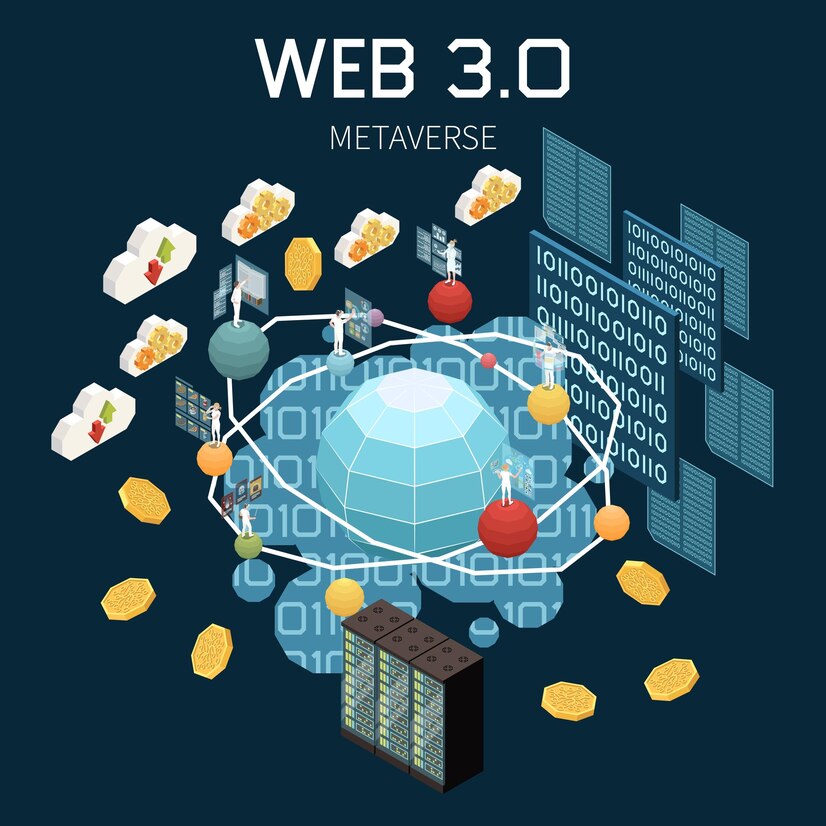Exploring the Evolution: How Web 3.0 Differs from Web 2.0

The internet has undergone significant transformations since its inception, with each phase bringing new possibilities and advancements. Web 2.0 marked a shift towards user-generated content and interactive experiences, but now, the landscape is evolving once again with the emergence of Web 3.0. In this blog post, we will delve into the key differences between Web 3.0 and its predecessor, Web 2.0, exploring the technological advancements, user experiences, and the overall impact on the digital realm.
Understanding Web 2.0
Web 2.0, often referred to as the “social web,” revolutionized the internet by introducing user-generated content, social media, and collaborative platforms. This phase encouraged active user participation, transforming the web from a static information source to a dynamic, interactive space. Key characteristics of Web 2.0 included:
User-Generated Content
Web 2.0 platforms thrived on content created by users. Blogs, forums, and social media allowed individuals to contribute, share, and collaborate on a global scale.
Social Media Dominance
The rise of platforms like Facebook, Twitter, and YouTube defined the Web 2.0 era, emphasizing the importance of social interactions, sharing, and connectivity.
Collaboration and Sharing
Collaborative tools, such as Google Docs, highlighted the shift towards real-time collaboration, enabling users to work together seamlessly.
Mobile Optimization
The advent of smartphones and mobile applications became integral to Web 2.0, allowing users to access content and interact on-the-go.
Web 3.0: A Paradigm Shift
Web 3.0 represents the next phase of internet evolution, marked by advanced technologies, decentralized systems, and a focus on personalization and user control. Key differentiators between Web 3.0 and Web 2.0 include:
Semantic Web and AI Integration
Web 3.0 introduces the concept of the semantic web, where machines understand and interpret data in a more human-like manner. Artificial Intelligence (AI) plays a significant role, enabling personalized and context-aware user experiences.
Decentralization and Blockchain Technology
Unlike the centralized nature of Web 2.0 platforms, Web 3.0 embraces decentralization. Blockchain technology ensures increased security, transparency, and user ownership of data.
Personalized Experiences
Web 3.0 focuses on tailoring content and services to individual preferences. AI algorithms analyze user behavior and provide highly personalized recommendations and experiences.
Interoperability and Integration
Web 3.0 promotes interoperability among different platforms and applications. Seamless integration allows users to access and share data across diverse services without constraints.
Smart Contracts and Digital Assets
The integration of smart contracts on blockchain platforms enables the execution of trustless agreements, while the concept of digital assets introduces new forms of ownership and value exchange.
Web 3.0 vs Web 2.0
Ownership and Control
Web 2.0 platforms often control and monetize user data. In contrast, Web 3.0 empowers users with greater control over their data and digital identity.
Data Privacy and Security
Web 3.0 prioritizes user privacy through decentralized systems and cryptographic methods, addressing concerns related to data breaches and unauthorized access.
Evolution of Search Engines
While Web 2.0 relied on keyword-based searches, Web 3.0 incorporates semantic searches, understanding context and delivering more accurate and relevant results.
E-commerce and Digital Transactions
Web 3.0 redefines e-commerce with decentralized marketplaces, enabling secure and transparent digital transactions through blockchain technology.
Conclusion
In conclusion, the transition from Web 2.0 to Web 3.0 represents a profound evolution in the digital landscape. The advancements in AI, blockchain technology, and a renewed focus on user control redefine the way we interact with the internet. As Web 3.0 continues to unfold, its impact on various industries, from finance to healthcare, will undoubtedly reshape the online experience. Understanding these differences is crucial for individuals and businesses looking to stay at the forefront of the ever-evolving digital ecosystem. Embracing the principles of Web 3.0 opens new possibilities for innovation, collaboration, and user empowerment in the digital age.